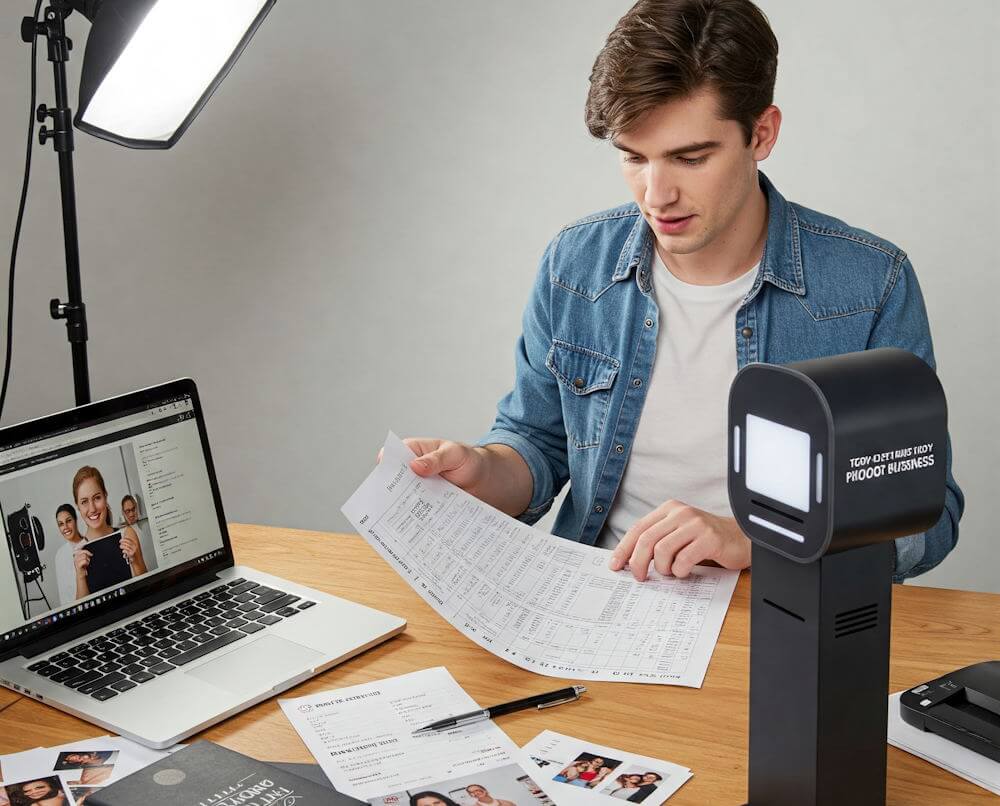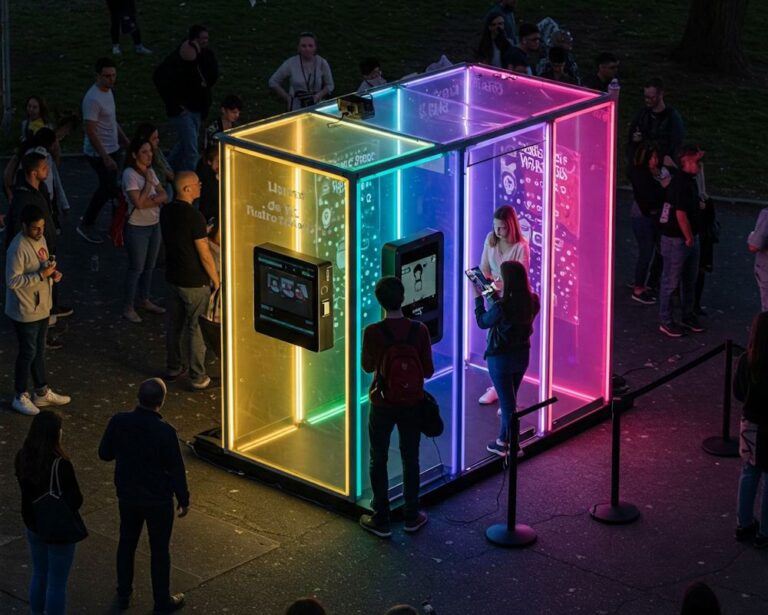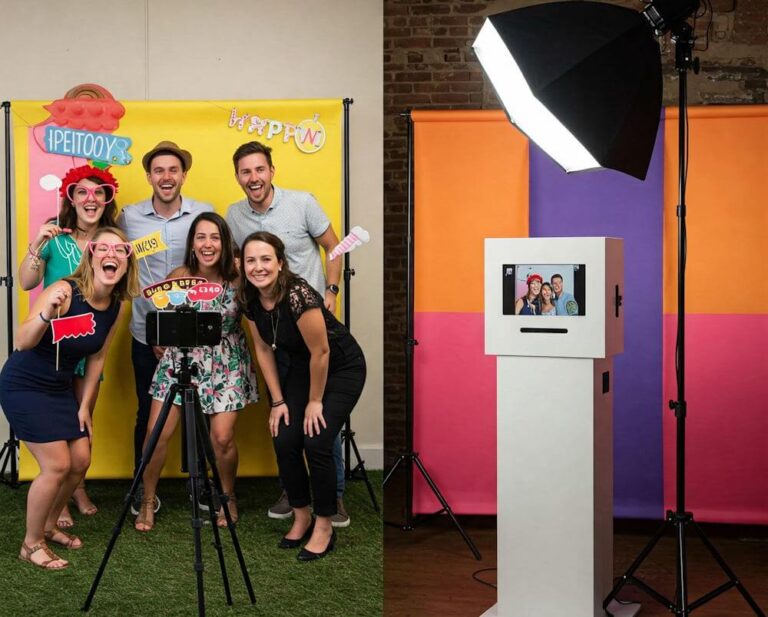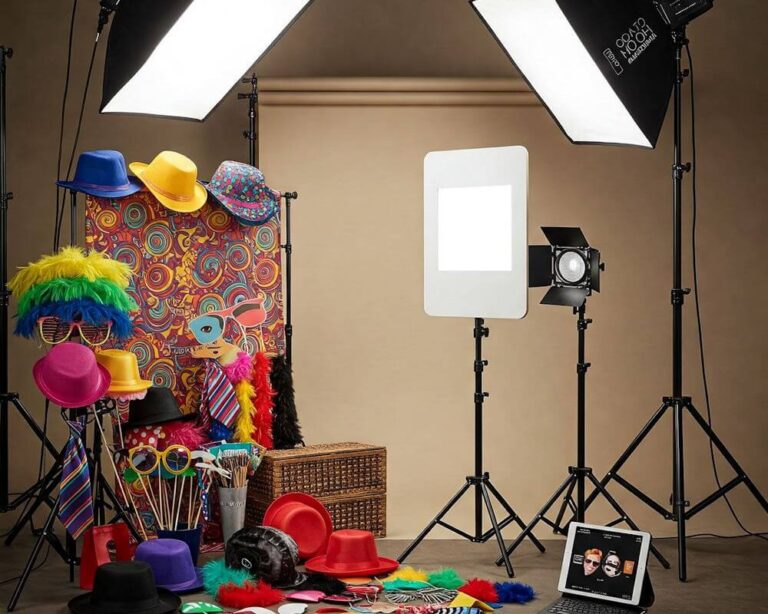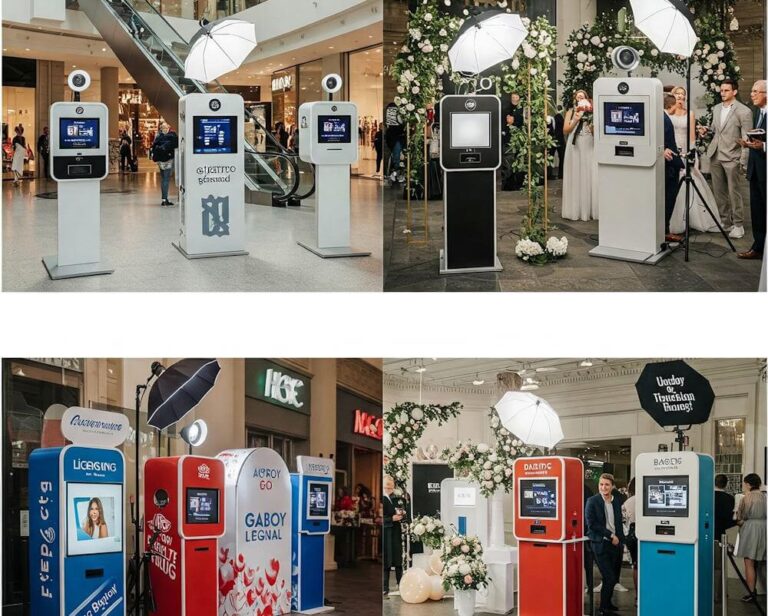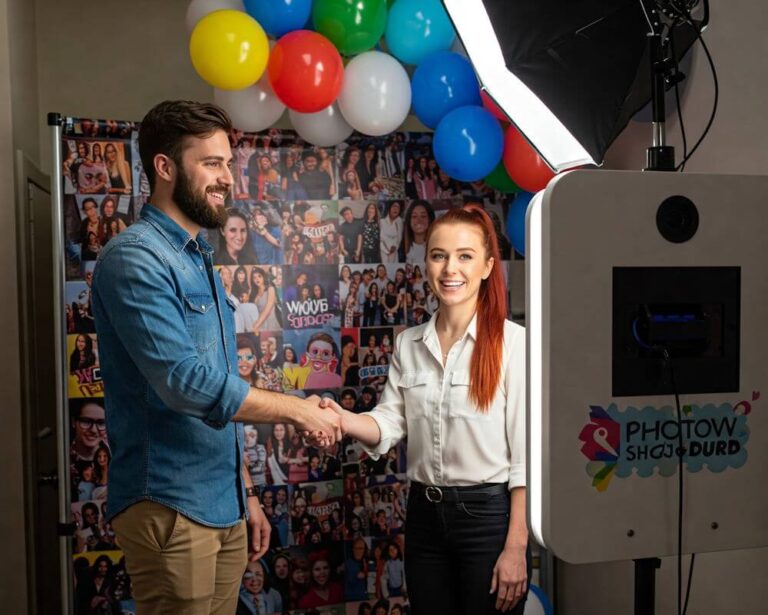The photo booth industry has experienced remarkable growth in recent years, becoming an essential part of various social events, including parties, weddings, and corporate functions. With the rise of social media, the demand for engaging and shareable experiences has surged, propelling the popularity of photo booths. Couples seeking unique entertainment options for their weddings, companies aiming to enhance brand visibility during corporate gatherings, and individuals hosting birthday parties all contribute to the flourishing market.
Entrepreneurs are increasingly drawn to the photo booth business due to its relatively low startup costs and the potential for significant profit margins. The process of starting a photo booth rental service requires careful planning and consideration of several critical factors. Initially, understanding the target market is essential. Identifying the types of events that will benefit the most from photo booth services can help shape business strategies and marketing efforts.
Additionally, successful photo booth operators must navigate the competitive landscape of the industry. It is vital to differentiate from competitors through unique services, such as customized backdrops or themed props, which can enhance the overall experience for guests. Equally important is the selection of high-quality equipment. Investing in reliable camera technology and user-friendly software elevates the customer experience and encourages positive word-of-mouth referrals.
Furthermore, establishing a strong online presence through a well-structured website and active social media profiles can attract clients and enhance brand recognition. Photo booth operators should also consider developing partnerships with event planners, venues, and other vendors to expand their reach and marketability.
In conclusion, the photo booth business offers exciting opportunities for entrepreneurs willing to invest time and resources. Understanding the dynamics of this vibrant industry is crucial for anyone considering starting their own venture in this field.
Initial Investment: Equipment Costs
Starting a photo booth business entails various initial investments, particularly in equipment that is pivotal for delivering quality services. The primary equipment required encompasses cameras, printers, lighting, backdrops, and props, all of which contribute to the overall experience offered to clients. A breakdown of these elements will shed light on the financial commitments necessary to launch a successful venture.
The camera is arguably the most vital piece of equipment in a photo booth setup. A decent DSLR camera can range from $500 to $2,000, depending on the model and specifications. For those seeking budget-friendly options, entry-level cameras may suffice, but high-quality images are fundamental for client satisfaction and repeat business. Alongside the camera, purchasing a reliable printer is essential for providing instant photo prints. A good dye-sublimation printer can cost between $300 and $800, ensuring that the prints are vibrant and durable.
Lighting also plays a crucial role in the overall quality of the images captured. Softbox or ring lights, which enhance illumination and reduce shadows, can range from $50 to $300 each. Investing in quality lighting equipment is necessary to create a professional atmosphere and enhance image quality. Backdrops provide essential aesthetic appeal, and these can vary widely in price. Simple fabric backdrops may cost around $30, whereas custom and visually striking options can exceed $200.
Props add a fun and interactive element to the photo booth experience; hence investing in a diverse collection is worthwhile. Depending on the size and variety, the cost of props can range from $50 to several hundred dollars. Additionally, business owners must weigh the advantages of purchasing versus renting equipment. While purchasing may involve a higher initial investment, renting offers flexibility, albeit at the cost of ongoing payments. Ultimately, careful planning and budgeting for equipment costs are fundamental in establishing a spurring photo booth business.
Software and Technology Expenses
When considering the establishment of a photo booth business, the expenses associated with software and technology play a significant role in overall startup costs. Effective management of photo booth operations requires specialized software for various functionalities, including photo capture, editing, and sharing. Opting for the right software solution is crucial, as it directly impacts the quality of service provided to clients.
There are numerous software options available in the market designed specifically for photo booth businesses. These programs often come with diverse pricing structures, ranging from one-time purchase licenses to subscription-based models. One of the most popular options includes photo booth management software that streamlines the process from booth setup to the delivery of finished images to users. Typical costs for licensed software can range from $200 to $600, while subscription-based models may require a monthly fee of $20 to $50, depending on features included.
In addition to the essential software, investment in hardware is paramount. Tablets and computers equipped with sufficient processing power are necessary to run the software efficiently. A capable tablet can range from $300 to $1,000, while computers may cost anywhere from $500 to $2,000, depending on specifications. Furthermore, additional technology such as printers for instant photo output can lead to further expenses, costing around $300 to $800 based on the model and quality desired.
It is also wise to consider potential costs for software upgrades and ongoing maintenance. Keeping software up-to-date is essential for both security and feature enhancements. Overall, accurately budgeting for software and technology expenses ensures a solid foundation for the photo booth operation, which can ultimately enhance customer experience and satisfaction.
Marketing and Branding Costs
When embarking on the journey of establishing a photo booth business, it is crucial to allocate a budget for marketing and branding costs. These expenses play a significant role in ensuring the business not only reaches potential clients but also establishes a recognizable identity within the industry. Branding involves creating a unique image and message that resonates with target audiences, which can often necessitate hiring professional graphic designers or branding consultants. Costs associated with logo design, color schemes, and overall brand identity can range considerably depending on expertise and complexity, typically ranging from a few hundred to several thousand dollars.
In addition to branding, website development is an integral component of effective marketing. A professional website serves as the hub for your online presence, showcasing your services and facilitating customer inquiries. Businesses may incur expenses for domain registration, hosting services, and web design. A well-functioning website typically costs between $500 to $3000, depending on customization and features such as booking systems or integrated galleries. This investment ensures that potential clients have access to your services and can view your portfolio easily, ultimately leading to increased business opportunities.
Online advertising is another essential cost factor. Paid search ads, social media ads, and pay-per-click campaigns can significantly enhance the visibility of your photo booth business. Companies often allocate a monthly budget for these ads, which can vary widely based on selected platforms and target audience specifications. Social media promotion can further bolster reach and engagement; however, creating high-quality visual content for platforms like Instagram and Facebook may require additional expenditure on photography or graphic design services.
Lastly, printed materials such as business cards, brochures, and promotional flyers are fundamental to offline marketing efforts. Although these costs may seem minor, they can quickly accumulate, often ranging from $100 to $1000 for a comprehensive set of branding materials. Employing effective marketing strategies, while balancing costs, will ensure your photo booth business successfully captures the attention of potential clients in a competitive market.
Insurance and Licenses
Starting a photo booth business involves several legal and financial considerations, particularly concerning the licenses and insurance required to operate legally and safely. Licensing requirements can vary significantly depending on the location of your business. Typically, obtaining a business license and registering your business name with local authorities is essential. This initial step ensures compliance with local regulations and can range from $50 to several hundred dollars, depending on the jurisdiction.
In addition to general business licenses, certain areas may require specific permits for operating event-related businesses. For instance, if you plan to set up your photo booth at various venues, you may need event permits, particularly for large gatherings or public events. It is advisable to consult local municipal offices to identify any necessary permits and their associated costs. The financial commitment for these permits can be relatively modest, but it is vital not to overlook them to avoid potential fines or operational disruptions.
Equally important is acquiring appropriate insurance coverage. Liability insurance is crucial for a photo booth business, as it protects you from financial burdens stemming from accidents or damages that might occur during an event. General liability insurance typically costs between $400 to $1,000 annually, depending on various factors, such as the size of your operation and the coverage limits you choose. Furthermore, equipment insurance is advisable as it covers damage or theft of your photo booth equipment, which can be a significant investment. The costs for this coverage can vary widely based on the value of your equipment and chosen insurance provider.
Investing in the correct licenses and insurance is not simply a regulatory requirement; it safeguards your business from potential liabilities and ensures that you can operate with peace of mind. As you establish your photo booth business, prioritizing these aspects will ultimately contribute to its success.
Operational Costs: Staffing and Logistics
Starting a photo booth business involves myriad operational costs that directly influence profitability. One of the primary expenses is staffing for events. Hiring qualified personnel is essential to ensure smooth operations during events. On average, businesses allocate resources for event staff such as operators, attendants, and sometimes additional personnel for customer service. The amount spent on wages can vary based on the duration of the event, the number of staff required, and local wage standards. Moreover, there may be additional costs associated with labor, such as insurance and training, which need to be factored into the overall budget.
In addition to staffing costs, travel expenses play a significant role in the operational budget. Depending on the scope of the photo booth business, you may find yourself traveling to various venues across different locations. This incurs costs for transportation, which might include vehicle maintenance, fuel, parking, and potential overnight accommodations. The distance traveled can significantly impact the bottom line, especially for businesses that require frequent travel to serve clients effectively.
Logistics also come into play when setting up the photo booth at events. The transportation and setup of equipment require meticulous planning and can lead to unforeseen expenses. Transporting the photo booth setup safely is crucial, as any damage to the equipment could lead to costly repairs or replacements. Furthermore, the time invested in setting up the booth and managing logistics must be considered, as it takes away from time that could be spent on generating revenue. To maintain profitability, careful management of these operational costs is essential. Streamlining processes and planning ahead are key strategies to mitigate these expenses and enhance the overall success of a photo booth business.
Maintenance and Upkeep Expenses
The operation of a photo booth business requires careful attention to maintenance and upkeep expenses. These costs are necessary to ensure that the equipment and software function smoothly, thereby providing clients with a seamless experience. Initially, investing in high-quality photo booth equipment may seem sufficient; however, ongoing maintenance is crucial for long-term success.
Regular equipment servicing is essential to prevent malfunctions and ensure that all components, such as cameras, printers, and lighting equipment, operate efficiently. Budgeting for periodic checks can help identify potential issues before they escalate into costly repairs. Additionally, it is advisable to have a reserve fund for unexpected repairs or replacement of technological components that may wear out over time.
Software maintenance is equally important, as it ensures that all features remain functional and updated. Photo booth software often requires regular updates to both enhance performance and maintain compatibility with various devices. Failing to implement these updates can result in software running inefficiently or even becoming obsolete. Investing in reliable software solutions and staying on top of their maintenance is, therefore, a fundamental expense for photo booth operators.
Moreover, consumables such as photo paper, ink, and props contribute to ongoing operational costs. Organizers should develop a budget which accounts for these supplies to ensure they are always prepared for events. By estimating usage and regularly reviewing inventory levels, businesses can proactively manage their supply costs.
In summary, maintenance and upkeep expenses are vital elements of running a successful photo booth business. By allocating funds for both equipment and software maintenance, operators can minimize disruptions in service and enhance the overall customer experience. Establishing a thoughtful budget focused on these continuing costs will ensure the sustainability and profitability of the enterprise.
Profit Margins and Financial Planning
When embarking on a photo booth business venture, understanding profit margins and engaging in meticulous financial planning are essential components for long-term success. The pricing of services offered is a crucial factor that directly impacts overall profitability. To set competitive yet profitable prices, several elements must be considered, including equipment costs, venue expenses, staffing, and marketing efforts.
The costs associated with purchasing or renting photo booth equipment can vary significantly depending on the quality and features of the setup. Basic setups may be less expensive, while high-end options with advanced technology will incur higher initial costs. Additionally, regular maintenance and software updates should be factored into the overall budget, as these can affect ongoing financial performance. Calculating these expenses enables operators to establish a baseline for pricing services, ensuring that rates not only cover costs but also generate a profit.
In terms of profit margins, assess industry standards and competitor pricing to identify a suitable range. A typical profit margin for photo booth services can range from 25% to 50%, contingent upon the market demand and pricing strategy. Offering customizable packages can also cater to diverse clientele, enabling flexibility in revenues while targeting different customer segments, such as weddings, corporate events, or parties.
Creating a comprehensive financial plan ensures a balanced perspective on both revenues and expenditures. It’s prudent to outline all relevant costs within the plan, such as insurance, transportation, and taxes, alongside projected revenues derived from various service offerings. Regularly reviewing and adjusting this plan is vital, allowing adaptations to market changes or shifts in client preferences. By adhering to sound financial planning practices, operators can increase their profitability and sustain a successful photo booth business in the competitive landscape.
Conclusion: Making Informed Decisions
Starting a photo booth business entails a variety of costs that can significantly impact potential profitability. As we have explored throughout this blog post, initial expenses can include equipment purchases, software subscriptions, marketing, and venue fees, among others. It is crucial to approach the financial aspects with a clear understanding and a detailed budget, ensuring that you account for both fixed and variable costs. This meticulous financial planning will aid in cultivating a sustainable business model.
In addition to financial considerations, conducting thorough market research is paramount. Understanding the competition and identifying your target audience can inform your strategic decisions and marketing efforts, allowing you to position your photo booth services effectively in the ever-evolving event industry. Engaging with local businesses, event planners, and social media groups may provide vital insights into market demands and trends.
As you contemplate entering this vibrant industry, it is also beneficial to seek additional resources for further reading and consultation. Various online platforms and industry associations provide valuable information that can guide you through the nuances of launching a photo booth business. Networking with experienced professionals in the field can offer practical advice and potentially useful partnerships.
Ultimately, making informed decisions launched from comprehensive research and meticulous financial planning will lay a solid foundation for your photo booth business. By acknowledging and addressing both the costs involved and the market landscape, you will be better positioned to achieve success in this competitive yet rewarding venture.

